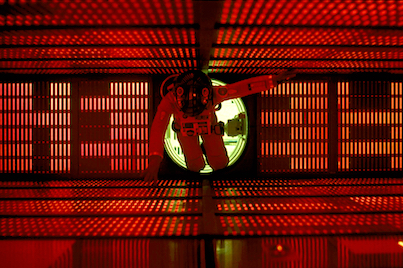 The lecture will focus on the use of pre-existing music in film, a practice that has taken a great variety of different forms from the early days of cinema to contemporary Hollywood. Ranging from the borrowing of well-known classical works to accompany silent films, to the very audible influence of the late-nineteenth century idiom on the soundtracks of Hollywood’s golden age movies, the use of pre-existing music remains ubiquitous. Our consideration of such practices will particularly focus on the way in which such music contributes to, or extends an intertextual reading of films, providing references to previous films as well as to cultural events originating outside the cinema auditorium.
The lecture will focus on the use of pre-existing music in film, a practice that has taken a great variety of different forms from the early days of cinema to contemporary Hollywood. Ranging from the borrowing of well-known classical works to accompany silent films, to the very audible influence of the late-nineteenth century idiom on the soundtracks of Hollywood’s golden age movies, the use of pre-existing music remains ubiquitous. Our consideration of such practices will particularly focus on the way in which such music contributes to, or extends an intertextual reading of films, providing references to previous films as well as to cultural events originating outside the cinema auditorium.
Preparatory Reading
- Miguel Mera – Invention/Re-invention
Preparatory Viewing
- Stanley Kubrick (dir) – 2001: A Space Odyssey
Additional Reading
- Stilwell and Powrie – Changing Tunes: The Use of Pre-Existing Music in Film
Associated Reading
- Gillian Anderson – The Presentation of Silent Films, or, Music as Anaesthesia
- Carol Flinn – The Most Romantic Art of All: Music in the Classical Hollywood Cinema
- David Patterson – Structure and Metaphor in Stanley Kubrick’s 2001: A Space Odyssey
- Irena Paulus – Stanley Kubrick’s Revolution in the Usage of Film Music: 2001: A Space Odyssey
Internet Resources
- Ian McIver – The Music of the Theatre Organ, from The Encylopaedia of Australian Theatre Organs, whilst being a little on the home-made side, provides a good range of illustration of the devices and music used by early cinema organists.
- Fred Mumford – Music and the Photoplay: Their Combination as a Means of Effective Entertainment, from The Encylopaedia of Australian Theatre Organs
- Metzler’s Original Cinema Music (Vol. 5 and Vol. 7) from the National Library of Australia
